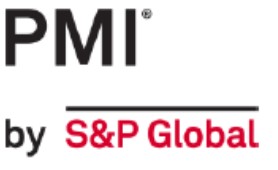The Global Purchasing Managers’ Index (PMI) for manufacturing produced by J P Morgan using the data from S&P Global fell to a 3-month low of 48.8 in October with output contracting for the 5th consecutive month and a further deterioration in new orders – it is the 14th month in a row that this has been below the crucial 50 level which is the longest run of negative figures since the period between December 2000 to February 2002.
Although the UK reading for the manufacturing sector was not as bad as either of the two previous months, the figure of 44.8 still implies that activity in the sector is contracting at a significant pace and it is quite a bit below the flash estimate of 45.2 that we reported last week. The output, orders and employment elements of the index were all in negative territory and the additional indicator of business confidence fell to a 10-month low, although the outlook was still positive.
The situation is even worse in the Euro-zone where the manufacturing PMI fell to a 3-month low of 43.1 as orders fell at a pace that is among the sharpest on record in the survey. Employment int eh sector fell at its fastest pace since August 2020 and the best we can say about output is that it fell at the same pace as in September.
Despite this weakness, there is mix of month-on-month trends among the 8 Euro-zone countries included in the analysis. Four countries – Austria, Germany, Greece and (just) the Netherlands – had a reading that was higher than in September, while the other 4 (France, Ireland, Italy and Spain) had a lower figure. However, only Greece has a PMI that is above 50 and, despite the improvement on last month, Germany still has the lowest reading in the Euro-zone at 40.8.
The other 4 members of the EU that have a PMI survey all saw a higher manufacturing PMI than in September although, with the exception of Hungary which had the largest increase that took its reading to 50.5, they (Czechia, Poland and Sweden) are all still significantly negative. On the other hand, Turkey and especially Switzerland saw their manufacturing PMI lower than in September – for the latter, this was the largest month-on-month reduction in our analysis and led to them having the lowest reading in our report at 40.6.
There is similarly mixed picture in Asia and, with one exception, the manufacturing PMI’s are in negative territory. Taiwan (47.6) saw a modest improvement, Japan (48.7) edged up, South Korea (49.8) was down a smidgeon and China (49.5) saw a modest decline compared to September – the latter took it back below the crucial 50 level. The exception is India where, although the reading fell, at 55.5, it still has the highest reading in this analysis.
For the Americas, only Brazil had a lower PMI than in September and while the improvement (“less bad” would be a better description) figures for Canada and Mexico still left them with a contracting level of activity, the USA reading edged up to exactly the neutral rate of 50.0 and Mexico saw a more significant increase which took their manufacturing PMI to 52.1 and over the contraction/expansion threshold.
All this means that we have gone from having 3 countries with a manufacturing PMI above 50 in September to 4 (plus the USA at exactly 50) in October – note that at the time of writing this report, we don’t have the figures for the ASEAN region. The individual S&P Global PMI reports are available to download on their web-site at https://www.pmi.spglobal.com/Public/Release/PressReleases but we also have a summary charts report which is attached below. You should note that the PMI readings for Hungary, Sweden and Switzerland are not compiled by S&P Global but can be found with an appropriate internet search (it also means that they are not part of the global PMI calculation).

